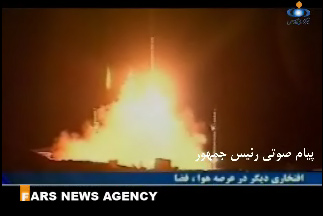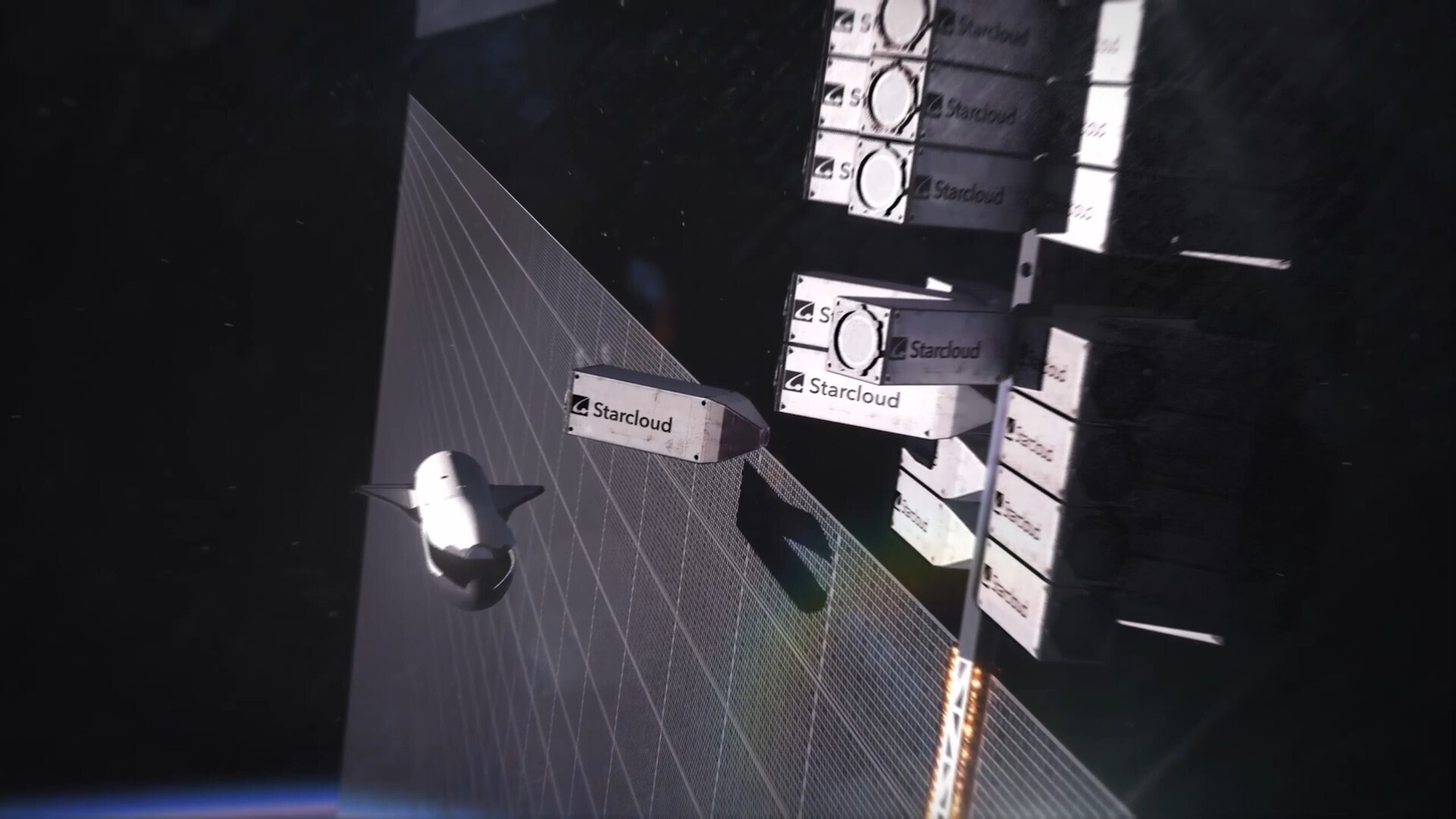Iran's Space Program: Lots of Talk, but a Chance to Shine

Iran has its sights set on putting an astronaut on the moonby 2025, after becoming the first Islamic nation to put its own payload intospace last year. But the grand goal of getting to the moon may be among the leastof the benefits Iran expects to reap from its expanding space program.
Iran's motivations for a space program are most likelypractical: developing possible ballisticmissile technology and building international prestige as a message tofriends and enemies alike, analysts say.
"They will clearly use dual-use technology for a militarybuildup, and as long as they at least dabble in human spaceflight, they getadvantageous press coverage on that as well," said Joan Johnson-Freese, professorof National Security Studies at the Naval War College in Newport, R.I.
Iran launched its firstdomestically built satellite in February 2009 and promises more satellitelaunches in 2011. It also has offered to help any other Muslim countries withdeveloping their own space programs, according to a FAQ recently compiled byTiffany Chow, a researcher at Secure World Foundation, a watchdog group basedin Washington, D.C., that tracks space security issues.
Such political signals may serve Tehran's purpose even if thecountry lacks the technical capabilities to back up its intentions, analystssaid.
"Given the current state of Iran's launch capabilities,it is unlikely that they'd be able to develop a human spaceflight program andsuccessfully send an Iranian to the moon by 2025," Chow pointed out.
Fits and starts
Breaking space news, the latest updates on rocket launches, skywatching events and more!
Several earlier launch attempts by Iran appeared to faildespite the country's claims otherwise, according to the Secure World FoundationFAQ. The rocket technology involves a mix of North Korean and Soviet missiledesigns.
The first launch attempt involved a two-stage rocket named Safir("Ambassador" in Farsi), with a dummy satellite, Aug. 17, 2008. Therocket failed shortly after liftoff, according to outside analysts.
Confirmed success finally came with the launch of theSafir-2 rocket Feb. 3, 2009. That rocket placed an Omid satellite weighing some44 to 60 pounds (20 to 27 kilograms) into low Earth orbit. The cube-shapedsatellite is almost 16 inches (40 centimeters) on each side.
Another launch attempt, this past Feb. 2, involved a Kavoshgar("Explorer") sounding rocket designed to climb just 62 miles (100kilometers). The sounding rocket — a rocket designed to collect data ratherthan transport cargo — had a living payload consisting of two turtles,a worm and a rat that were supposed to parachute back down to safety. Nosolid proof of the launch's success ever emerged.
Iran had played up the event by launching the rocket fromthe back of a military truck rather than one of the country's four designatedspace launch sites. The Defense Minister, Gen. Ahmad Vahidi, oversaw the launchand issued a warning that Iran would not tolerate "any unpeaceful use (ofspace) by any country."
Such portrayals by Iran of its launches are in starkcontrast to "repeated delays in their space program and failures notdiscussed," according to Charles Vick, senior technical and policy analystat GlobalSecurity.org.
Next on the launch pad
There's more to come in 2011.
Iran announced it will launch its 89-foot-long (27 meters) Simorghrocket, also known as Phoenix, which has a liquid fuel propulsion systemcapable of carrying more than 220 pounds (100 kg) to an altitude of almost 311miles (500 km).
The Simorgh rocket can carry a new generation of Iraniansatellites such as the Mesbah "Lantern" cube satellite, which measuresalmost 20 inches (50 cm) on each side and weighs between 132 and 165 pounds(60-75 kg).
Mesbah-1 was originally designed and built by Italy andslated for launch by Russia. (Russia had built Iran's first commercialsatellite, Sinah, and launched it Oct. 27, 2005.)
But Russia reported that the Mesbah-1 satellite neverarrived for launch, and in July 2009 it announced its refusal to launch anymore Iranian satellites. Italy similarly refused to help. Mesbah-1 disappearedand has since been replaced by Mesbah-2, built by Iran largely using theItalian design.
"Some of Iran's domestic launch capabilities are indeedinspired by, and to some extent based on, foreign models and systems,"Chow told SPACE.com. "Based on recent Iranian claims, though, it appearstheir newest launch vehicles and satellites are indigenously designed andconstructed."
The Tolu ("Sunrise"), due to launch in 2011, wouldbecome Iran's first remote-sensing satellite.
Behind the rocketry
Iran's launch vehicles rely heavily upon North Korean andChinese rocket or missile designs, which are in turn often derived from Sovietmissiles, analysts say. [MostDestructive Space Weapons Concepts]
"Direct evidence of assistance, education and hardwaretransfer from the Chinese to the Iranian and North Korean defense and space (industries)has been witnessed on large scale within China's military industrialinfrastructure," Vick said in an e-mail.
North Korea has been focusing mostly on missile development,as opposed to space, given their failures to achieve sustained orbit for anysatellites, Vick noted. Meanwhile, Iran'sballistic missile program has been moving like "gangbusters," headded.
But Vick compared the intentions behind China's five-yearplan and Iran's three-year plan for space to the Apollo moon program of the1960s. The Apollo and other U.S. civilian programs helped push ahead basicsciences and military technologies to keep the United States?"severalgenerations ahead of our adversaries," Vick explained.
Johnson-Freese suggested Iran sees a space program as a"win-win from both the technical and techno-nationalistic politicalperspectives," considering how missile and rocket development gohand-in-hand. Whether or not that gets them to the moon may be beside thepoint.
"The bottom line is, I think Iran's human spaceflightplans are mostly talk, but any part that isn't will be a bonus to them,"Johnson-Freese said.
- Most Destructive Space Weapons Concepts
- Video - Successful Satellite Kill
- Iran's Satellite Launch a Signal of Missile Progress, Analysts Say
Jeremy Hsu is science writer based in New York City whose work has appeared in Scientific American, Discovery Magazine, Backchannel, Wired.com and IEEE Spectrum, among others. He joined the Space.com and Live Science teams in 2010 as a Senior Writer and is currently the Editor-in-Chief of Indicate Media. Jeremy studied history and sociology of science at the University of Pennsylvania, and earned a master's degree in journalism from the NYU Science, Health and Environmental Reporting Program. You can find Jeremy's latest project on Twitter.
